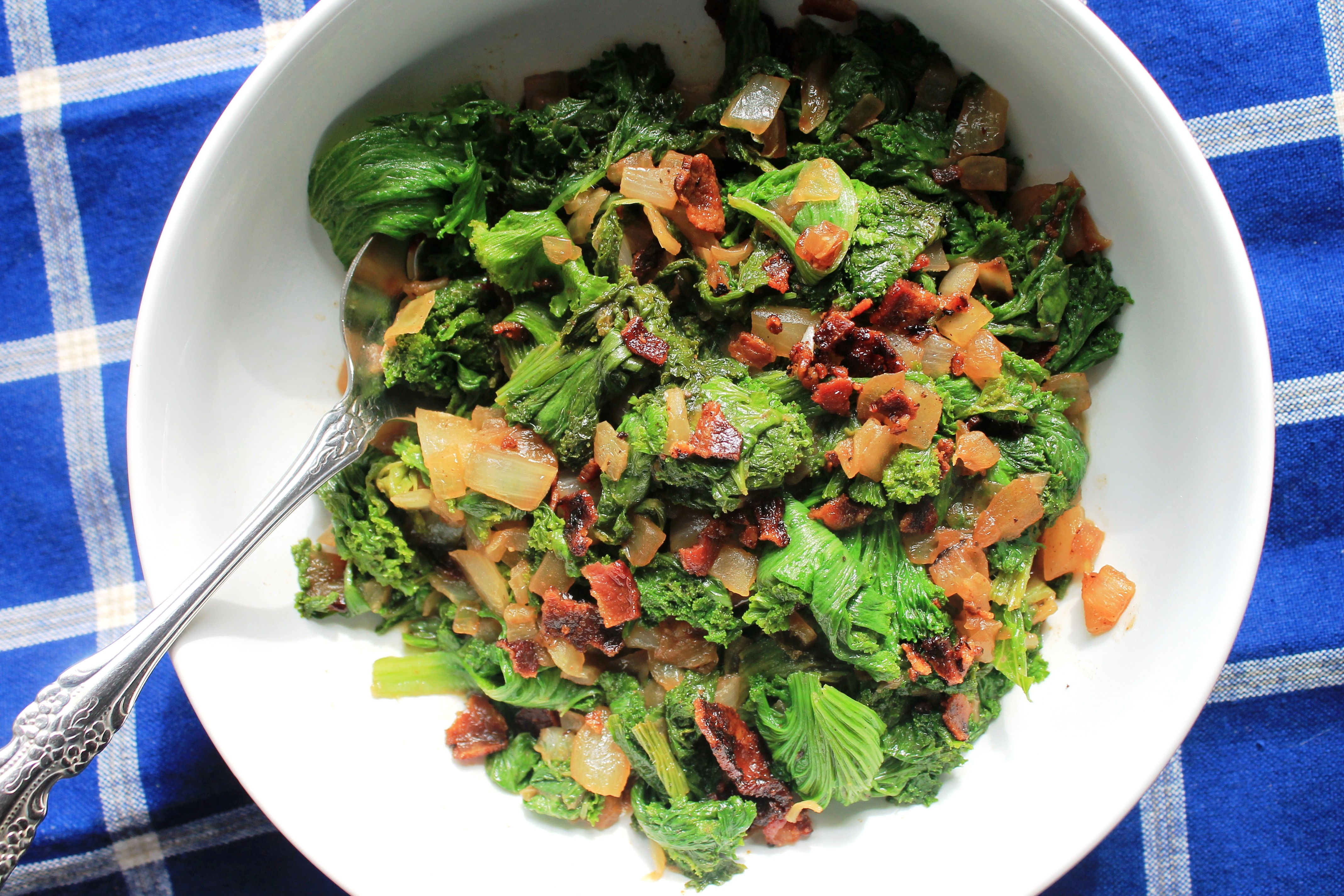 Sometimes viewing habits outweigh reading habits here on the blog. Lately, someone has been watching the current Charleston-based season of Top Chef and it’s put all manner of Southern classics on the radar. Recent weeks have seen Chess Pie Bars and a bourbon-based cocktail make appearances. Wanting to develop a streamlined recipe for traditional collard greens, Kyle just wasn’t satisfied with any of the versions he was finding online, or in any of the million and a half cookbooks that have been collected over the years. He wanted to avoid a long cooking time for a couple of reasons. Firstly, he wanted a recipe that leant itself to a quick weeknight dinner. Secondly, he really wanted to avoid those overcooked, mushy, unappealing “brown” greens that can happen too easily if you get distracted by other elements of the meal. The solution was to pare all of those recipes down to their common elements and use them as a template, thus creating an adaptable formula for his ideal version. After some cross-referencing, he broke it down to a greens/salted pork/onions/vinegar or other acid/sweetener/pepper combination. Once the proportions for each of those elements was established, all that remained was to decide how to represent each component.
Sometimes viewing habits outweigh reading habits here on the blog. Lately, someone has been watching the current Charleston-based season of Top Chef and it’s put all manner of Southern classics on the radar. Recent weeks have seen Chess Pie Bars and a bourbon-based cocktail make appearances. Wanting to develop a streamlined recipe for traditional collard greens, Kyle just wasn’t satisfied with any of the versions he was finding online, or in any of the million and a half cookbooks that have been collected over the years. He wanted to avoid a long cooking time for a couple of reasons. Firstly, he wanted a recipe that leant itself to a quick weeknight dinner. Secondly, he really wanted to avoid those overcooked, mushy, unappealing “brown” greens that can happen too easily if you get distracted by other elements of the meal. The solution was to pare all of those recipes down to their common elements and use them as a template, thus creating an adaptable formula for his ideal version. After some cross-referencing, he broke it down to a greens/salted pork/onions/vinegar or other acid/sweetener/pepper combination. Once the proportions for each of those elements was established, all that remained was to decide how to represent each component.
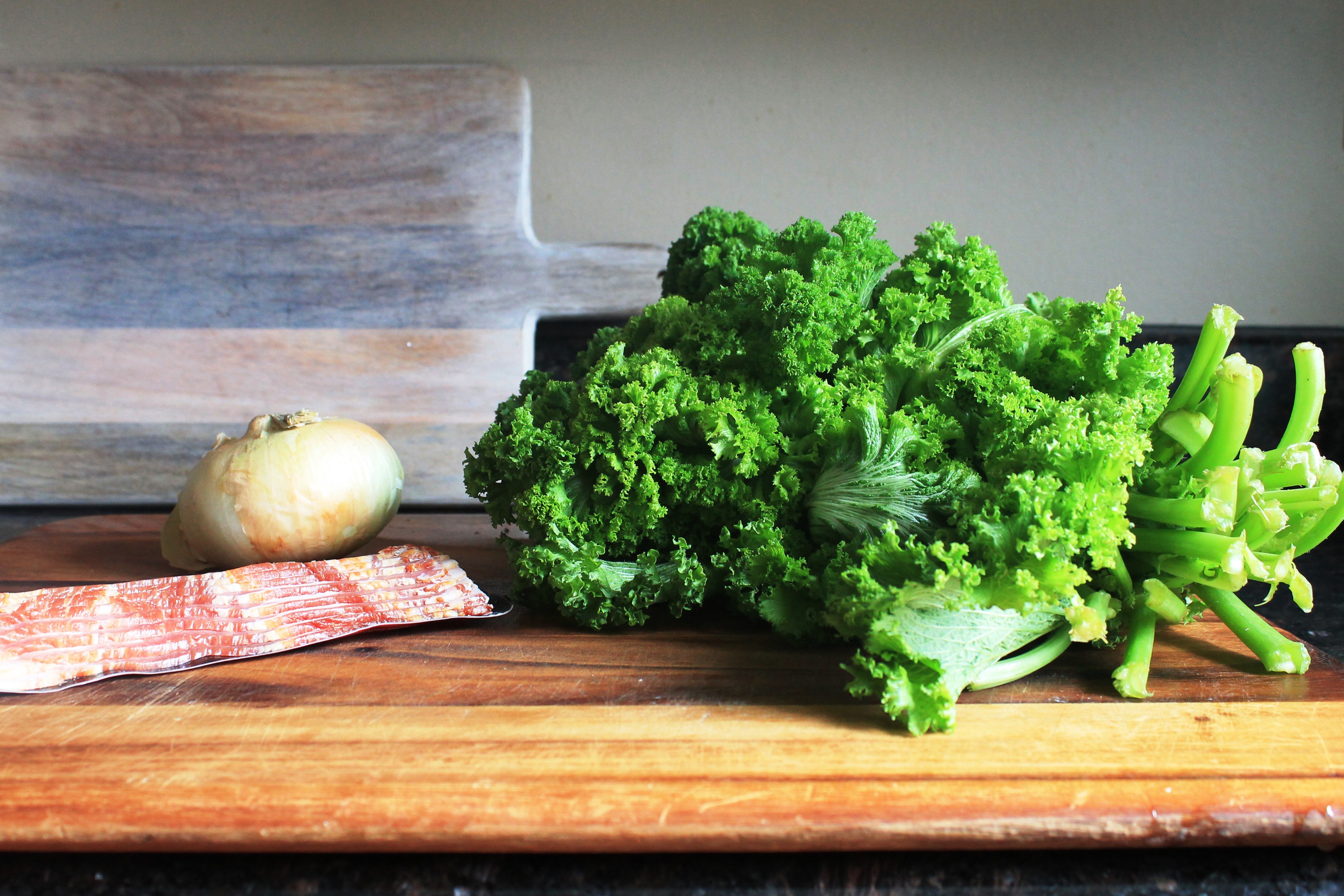 For this recipe, mustard greens were used. Actually, any sturdy leafy greens will work here—most kale varieties, chard, broccoli rabe, and of course collard greens are among our more accessible favorites. The mustard greens have a wonderful, vibrant color and a slightly bolder flavor that stands up perfectly to sautéing and doesn’t get lost in the shuffle with all of the other flavor elements in this recipe.
For this recipe, mustard greens were used. Actually, any sturdy leafy greens will work here—most kale varieties, chard, broccoli rabe, and of course collard greens are among our more accessible favorites. The mustard greens have a wonderful, vibrant color and a slightly bolder flavor that stands up perfectly to sautéing and doesn’t get lost in the shuffle with all of the other flavor elements in this recipe.
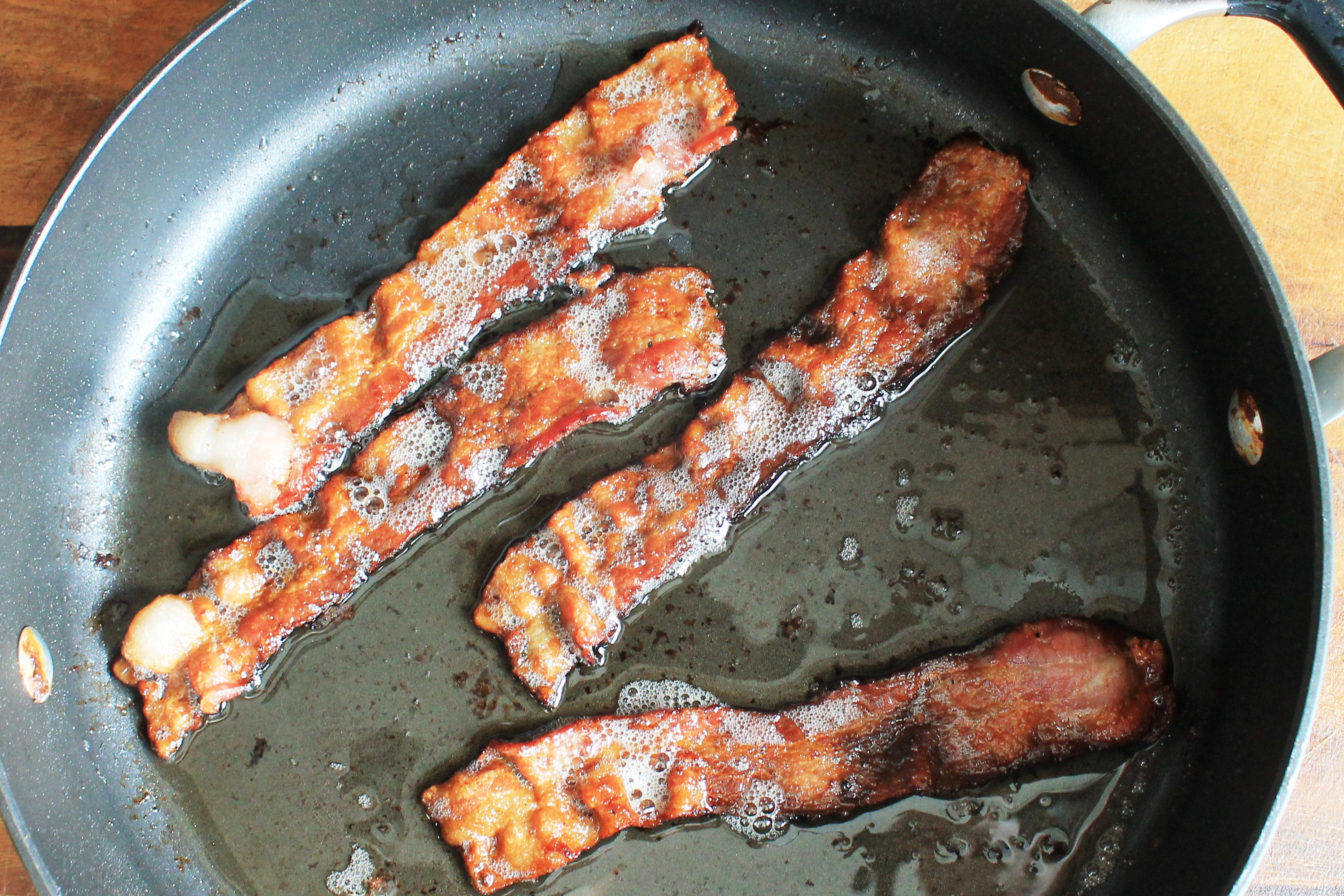 While the more traditional choice for the pork element would be a ham hock or pork neck bone, those proved a little impractical for the time-saving goal of this experiment, so he went with the more familiar, simpler choice of bacon. It gave the finished dish just the right touch of smokiness and salt because it’s bacon and that’s what it does best.
While the more traditional choice for the pork element would be a ham hock or pork neck bone, those proved a little impractical for the time-saving goal of this experiment, so he went with the more familiar, simpler choice of bacon. It gave the finished dish just the right touch of smokiness and salt because it’s bacon and that’s what it does best.
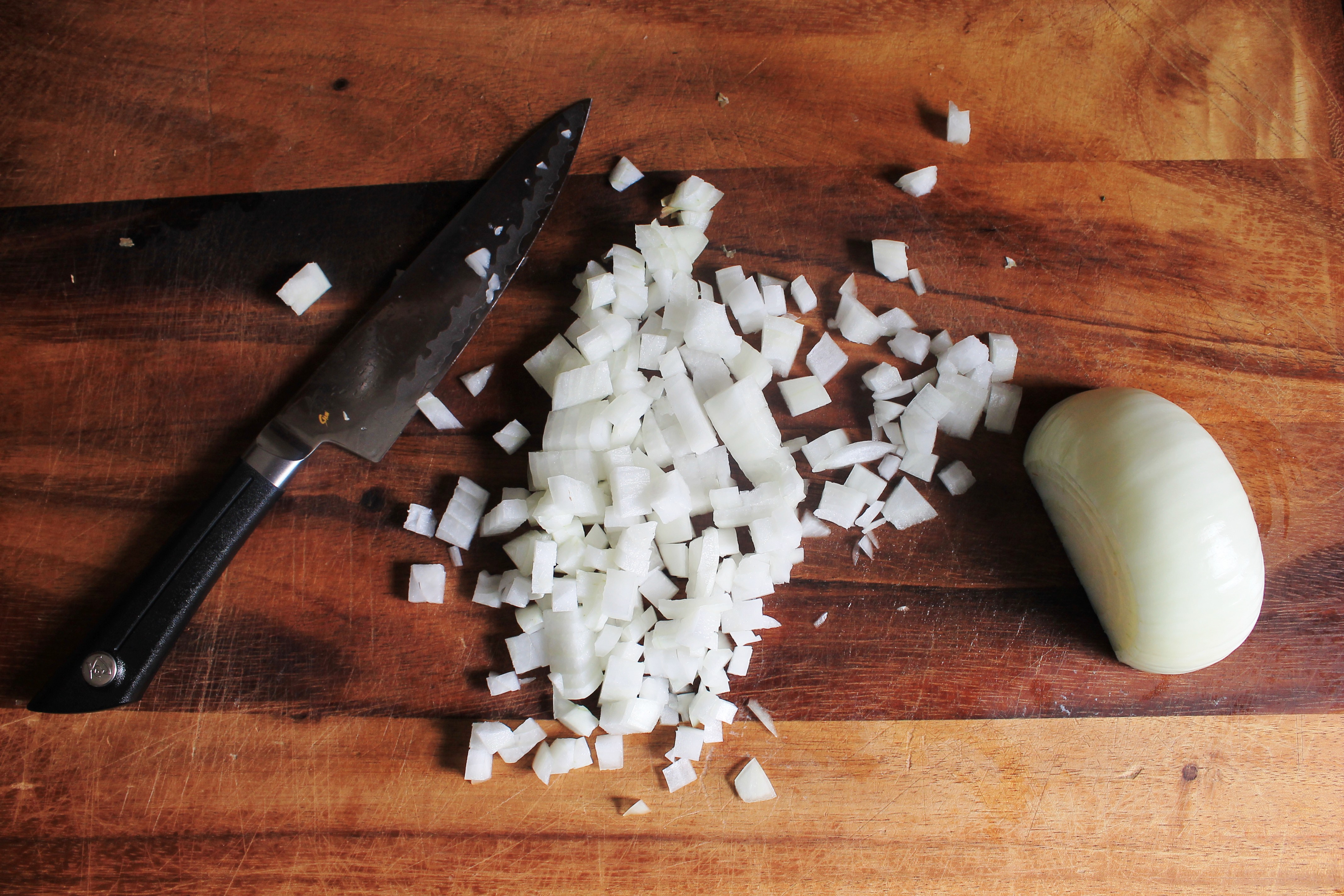 After cooking down the onions in the bacon fat, the next step was to build the “dressing” for the greens in the pan. This is where the other components come in to play. The acidic element of choice—as is often the case here—is balsamic vinegar. That is balanced by the sweet note of honey, then a touch of heat comes in the form of cayenne pepper. One non-traditional element here is the addition of Dijon mustard, which created a Salade Lyonnaise-style dressing for the greens. The entire mixture was reduced to an almost molasses-like consistency, giving all of the elements a chance to marry and balance.
After cooking down the onions in the bacon fat, the next step was to build the “dressing” for the greens in the pan. This is where the other components come in to play. The acidic element of choice—as is often the case here—is balsamic vinegar. That is balanced by the sweet note of honey, then a touch of heat comes in the form of cayenne pepper. One non-traditional element here is the addition of Dijon mustard, which created a Salade Lyonnaise-style dressing for the greens. The entire mixture was reduced to an almost molasses-like consistency, giving all of the elements a chance to marry and balance.
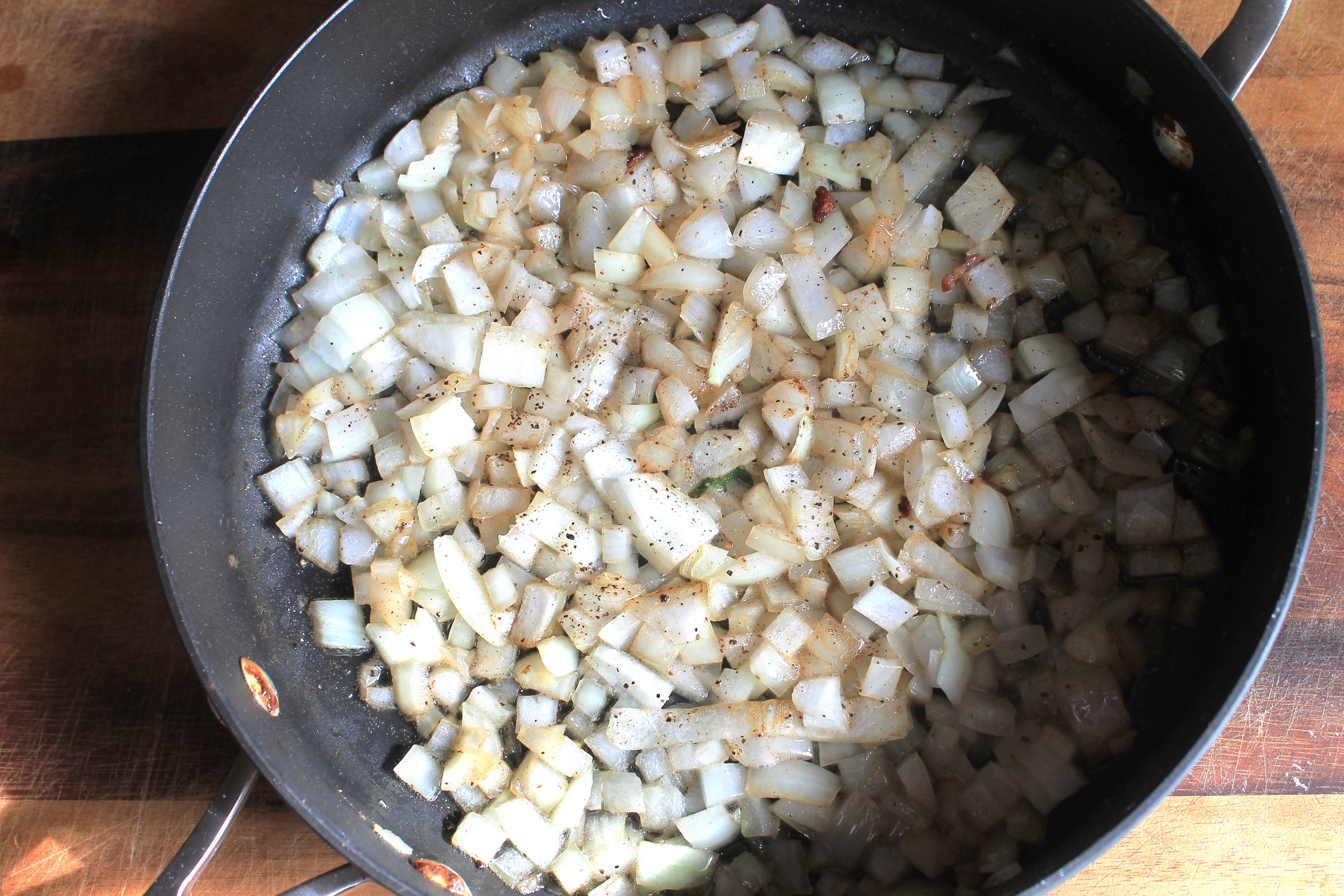 The honey is the unifying element here, believe it or not. It tempers the tang of the vinegar and mustard, and serves as the perfect counterpoint to the heat of the cayenne and the stronger vegetal notes of the greens.
The honey is the unifying element here, believe it or not. It tempers the tang of the vinegar and mustard, and serves as the perfect counterpoint to the heat of the cayenne and the stronger vegetal notes of the greens.
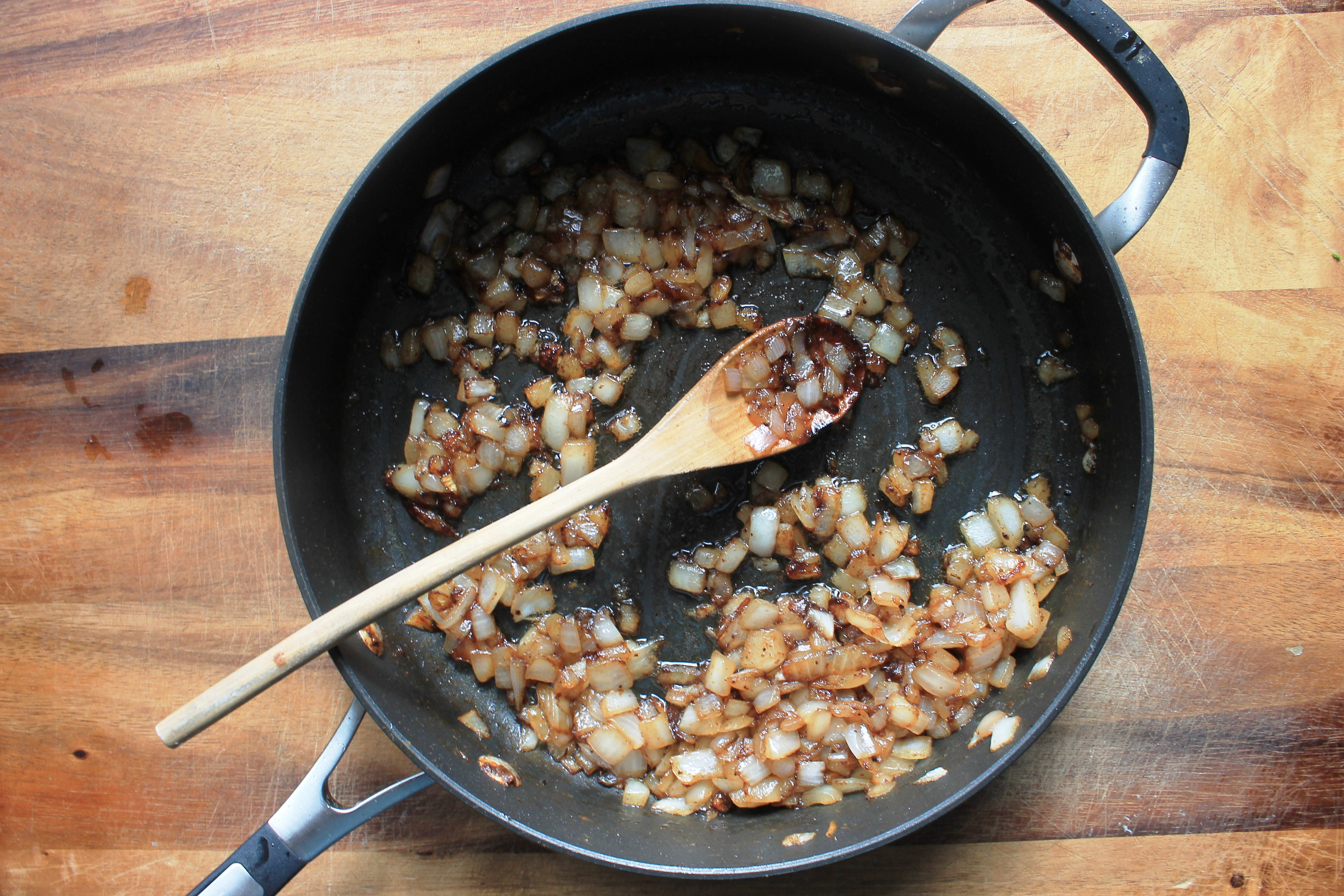 Once the greens are stemmed and chopped, they get added to the pan in batches, stirring until they are slightly wilted, working quickly to avoid overcooking. The greens should retain a fair amount of their color (gorgeous), and if it’s even possible to refer to greens in such a way, they should be al dente, with just a little firmness and texture when you bite into them.
Once the greens are stemmed and chopped, they get added to the pan in batches, stirring until they are slightly wilted, working quickly to avoid overcooking. The greens should retain a fair amount of their color (gorgeous), and if it’s even possible to refer to greens in such a way, they should be al dente, with just a little firmness and texture when you bite into them.
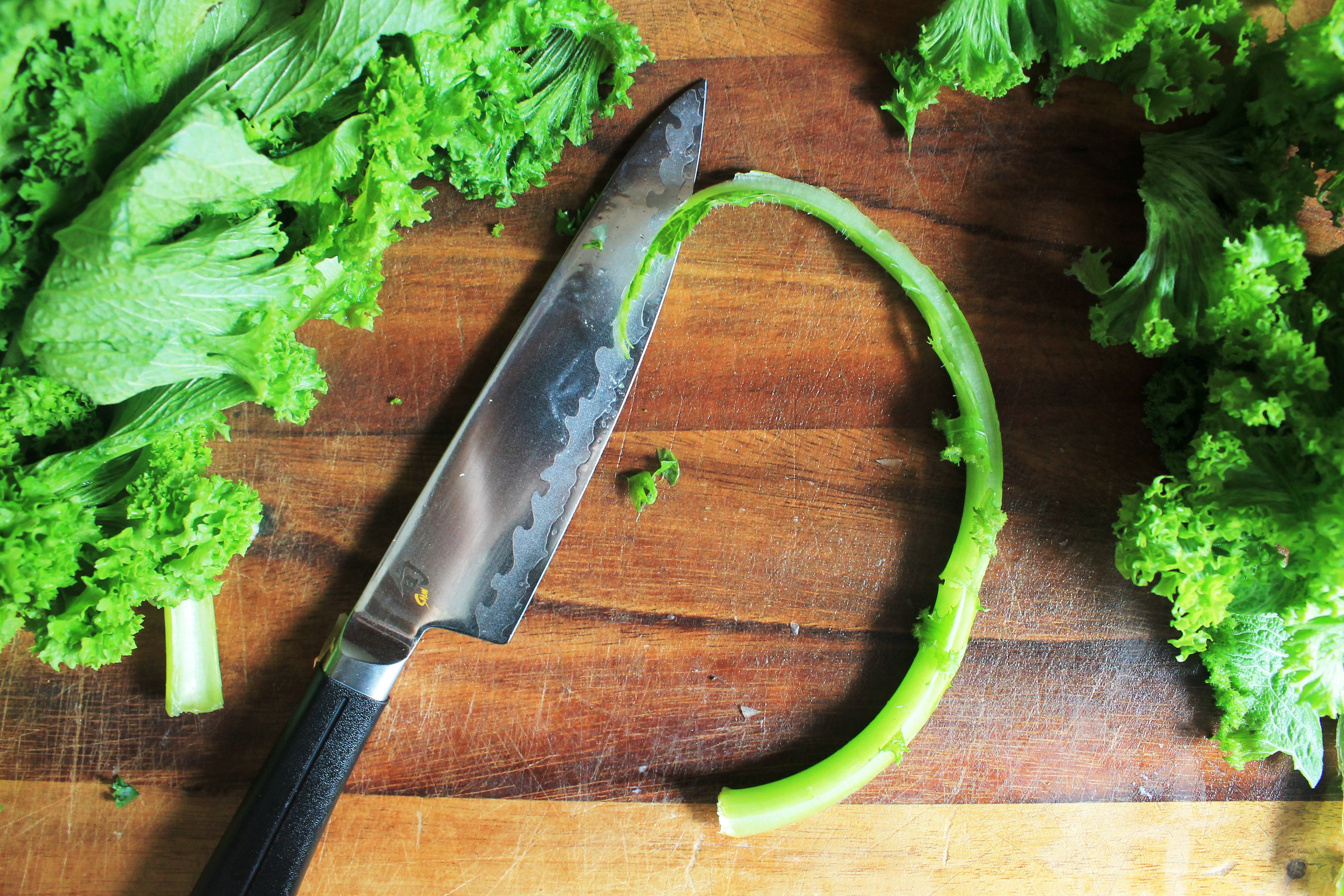 This is a little easier since the extra step of boiling the greens before sautéing them is skipped altogether. It was too much fuss for what was intended to be an easy side dish, thus reducing the risk of overcooking and eliminating the need for an additional pot and its subsequent cleaning. *mic drop*
This is a little easier since the extra step of boiling the greens before sautéing them is skipped altogether. It was too much fuss for what was intended to be an easy side dish, thus reducing the risk of overcooking and eliminating the need for an additional pot and its subsequent cleaning. *mic drop*
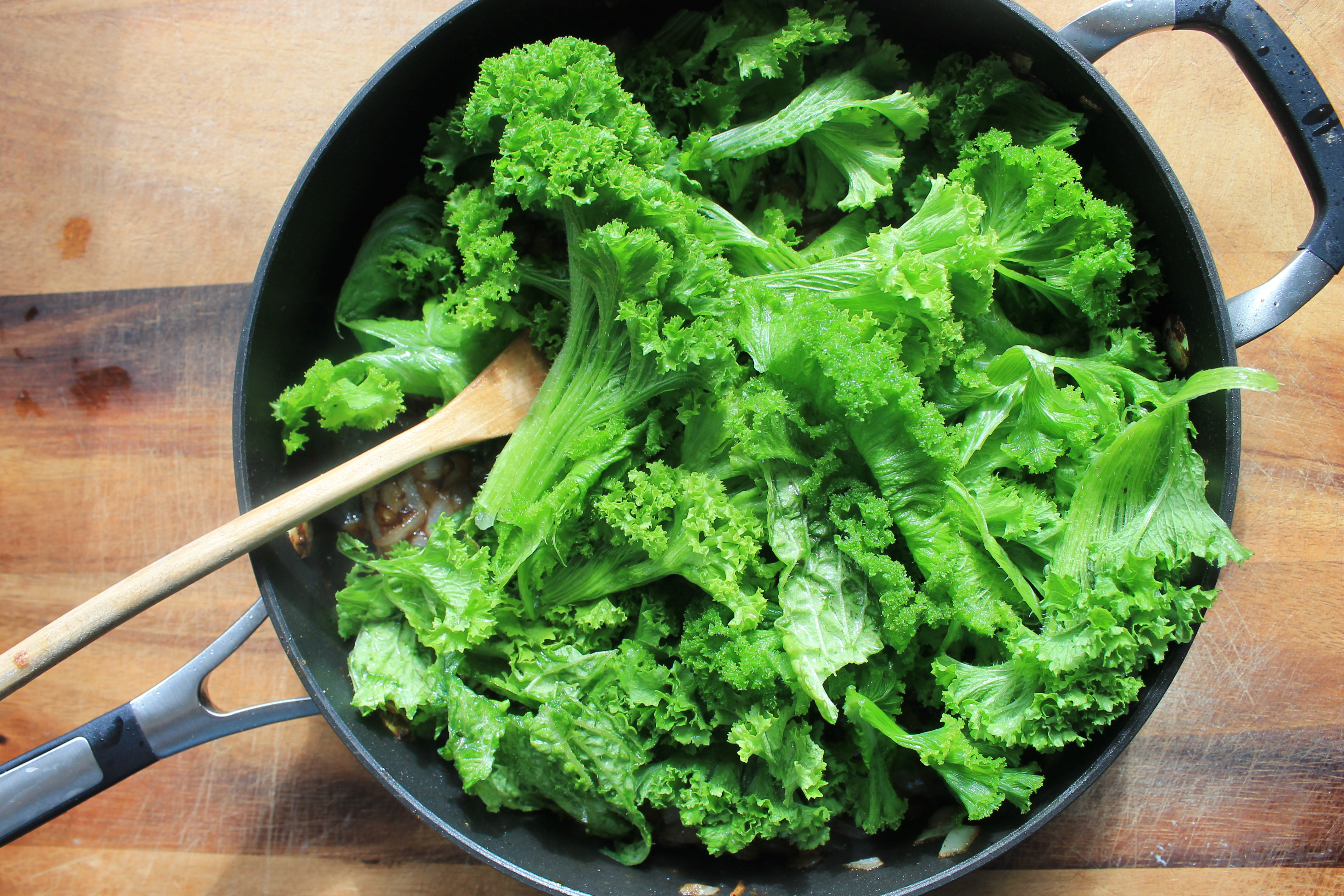 In the end, you have a vibrantly colored, beautifully flavored complement to any meal. The dressing coats the greens perfectly and once you top them with the reserved bacon, you have a symphony of texture and flavor that is sure to become a staple of your weekday repertoire.
In the end, you have a vibrantly colored, beautifully flavored complement to any meal. The dressing coats the greens perfectly and once you top them with the reserved bacon, you have a symphony of texture and flavor that is sure to become a staple of your weekday repertoire.
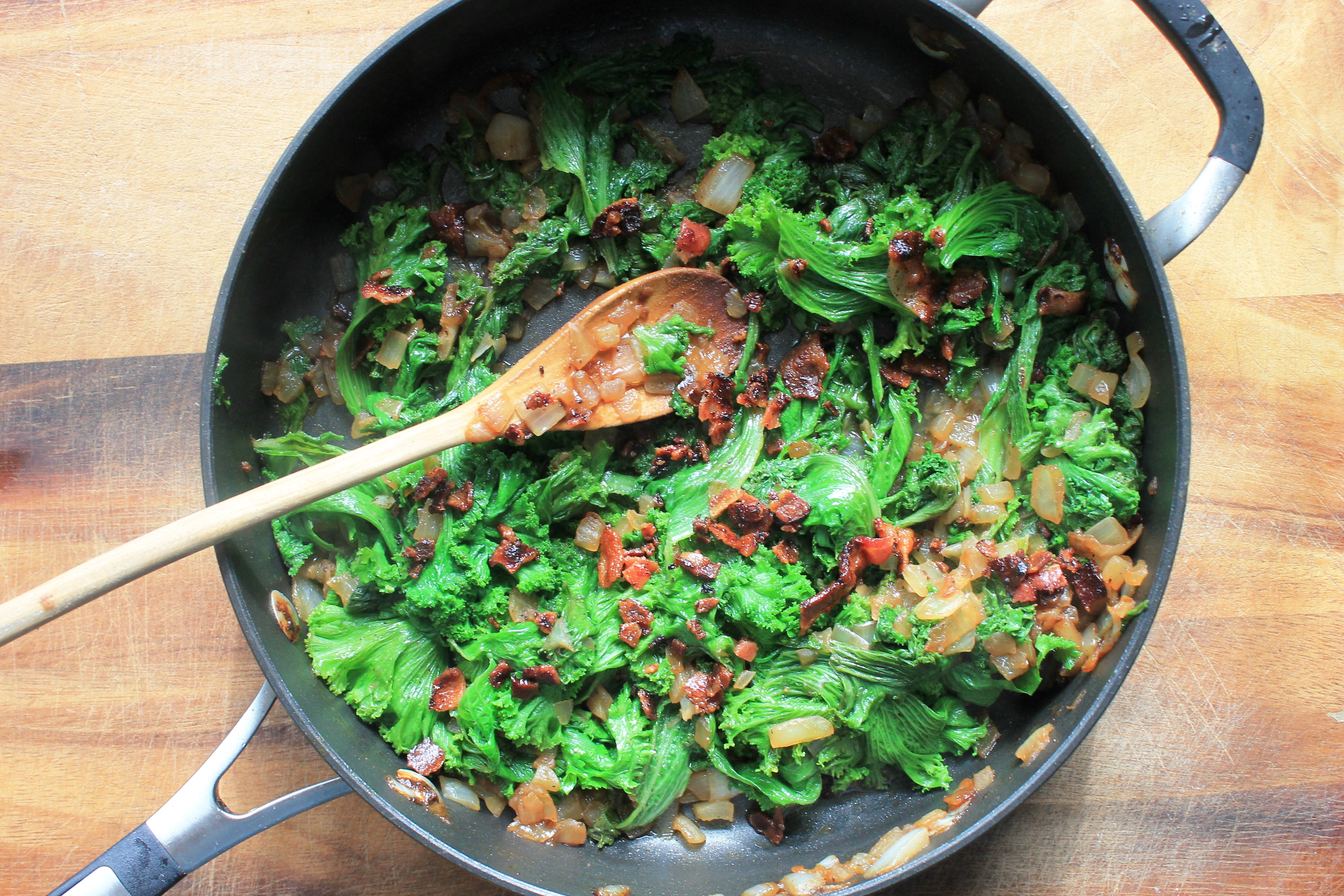 Also, once you get the technique down, you can start swapping in your own favorites, making this one of your own signature dishes and giving yourself and your family a wonderful alternative to plain old salad. Anything that makes healthier eating a pleasure rather than a chore is A-OK in our book. Enjoy!
Also, once you get the technique down, you can start swapping in your own favorites, making this one of your own signature dishes and giving yourself and your family a wonderful alternative to plain old salad. Anything that makes healthier eating a pleasure rather than a chore is A-OK in our book. Enjoy!
- 4 sliced thick cut bacon
- 1 medium sweet onion, peeled and diced
- 2 tablespoons balsamic vinegar
- 1 teaspoon dijon mustard
- 1 tablespoon honey
- ¼ teaspoon cayenne pepper
- 1 pound leafy greens (I used mustard greens), stemmed and chopped
- Black pepper to taste
- In a large skillet over medium heat, cook bacon until crisp, turning occasionally, about 5 to 7 minutes. Remove bacon from the pan and reserve.
- Reduce heat to medium-low and add the onion. Cook, stirring often, until onion softens, about 5 minutes. Add the vinegar, mustard, honey, and cayenne pepper and stir to combine. Cook until onions have caramelized and vinegar-mixture has reduced.
- Add the half the greens and cook until slightly wilted, about 3 minutes. Add the rest of the greens and cook, stirring occasionally, until all the greens are slightly wilted, about 3 to 5 minutes. Crumble the reserved bacon slices and sprinkle over cooked greens. Season with black pepper to taste and serve.
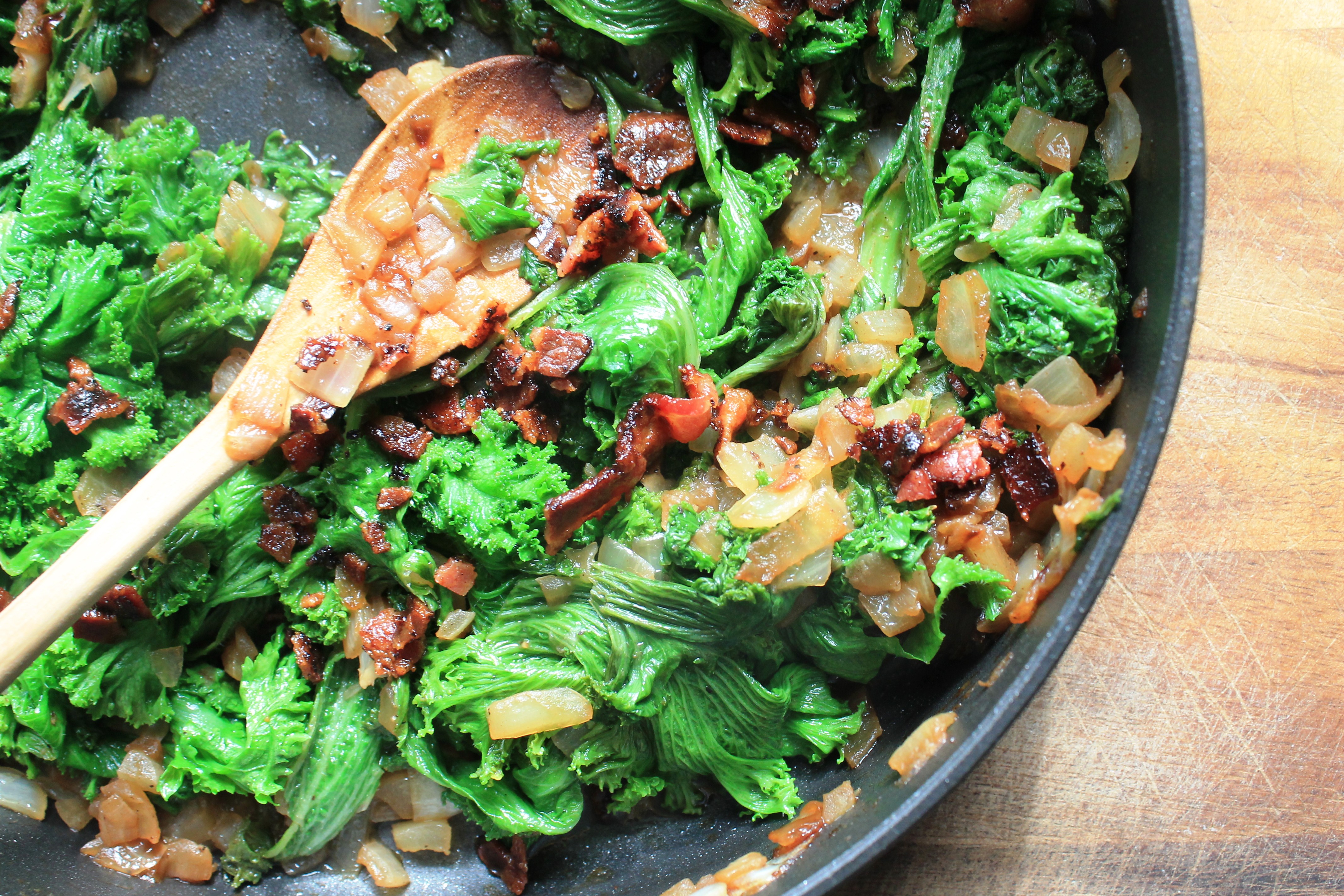
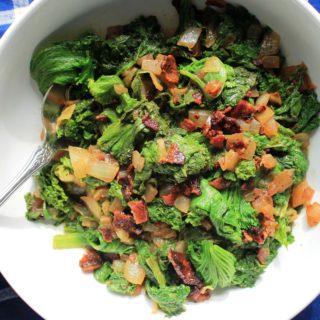

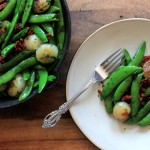
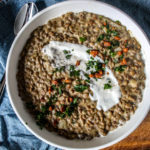



Angela says
This is so good. I am eating it daily. Thank you All-On
Kyle & Melissa says
Thank you Angela! Glad you enjoy the recipe